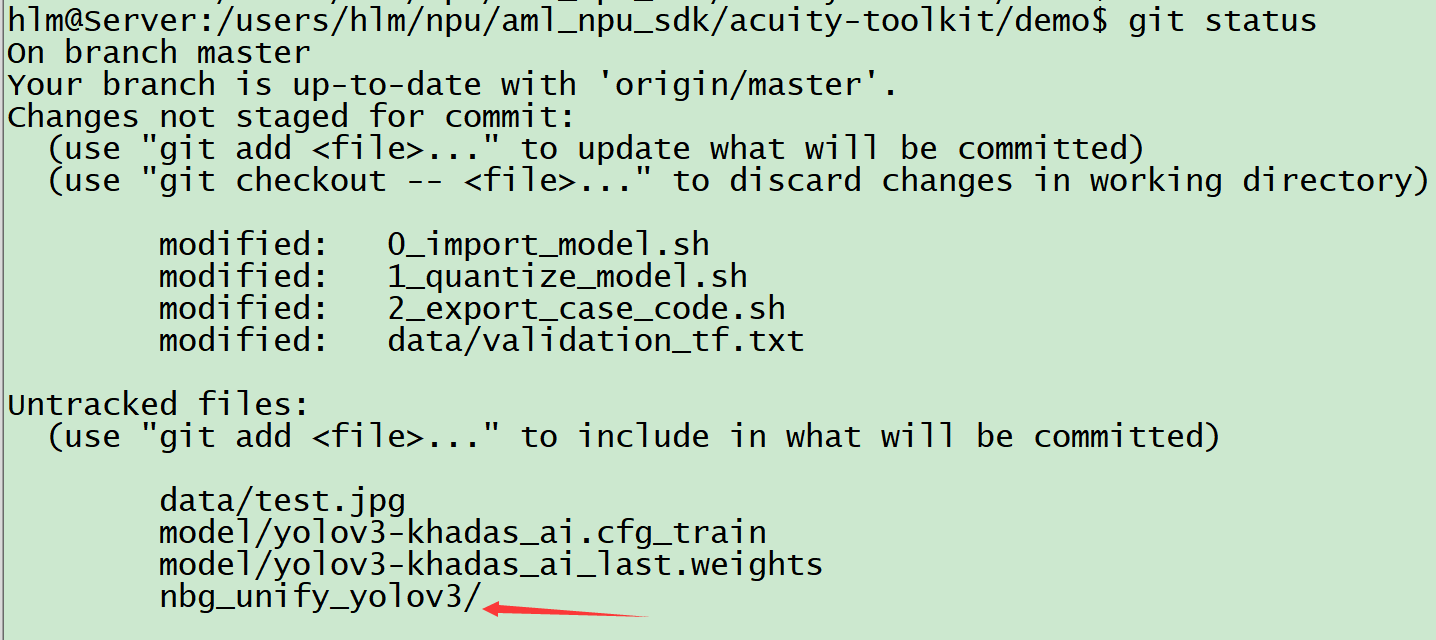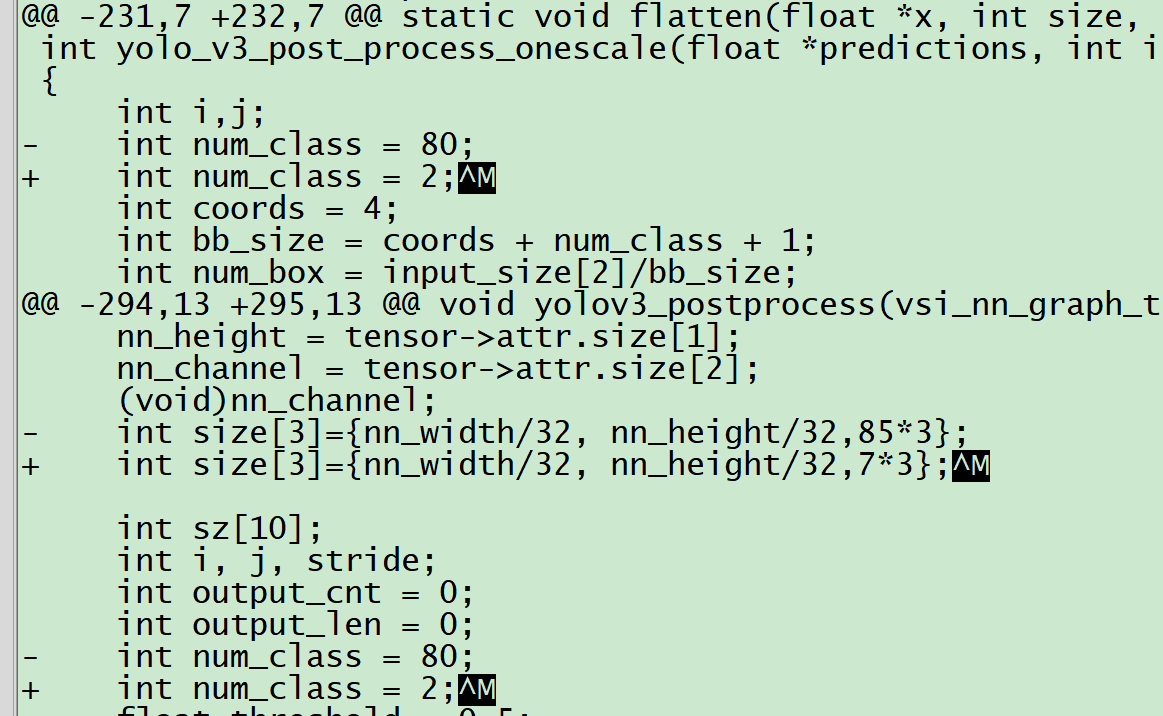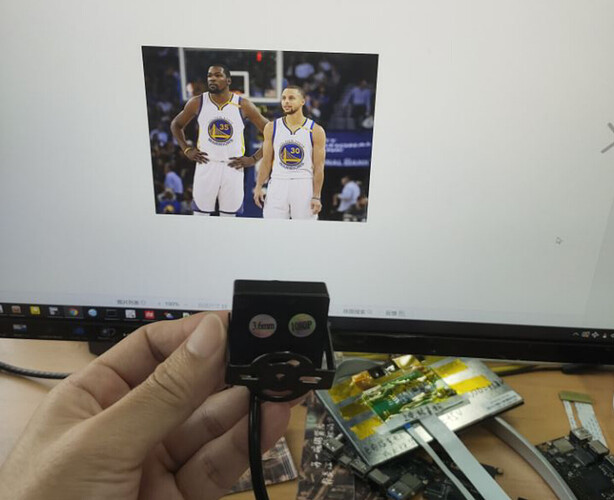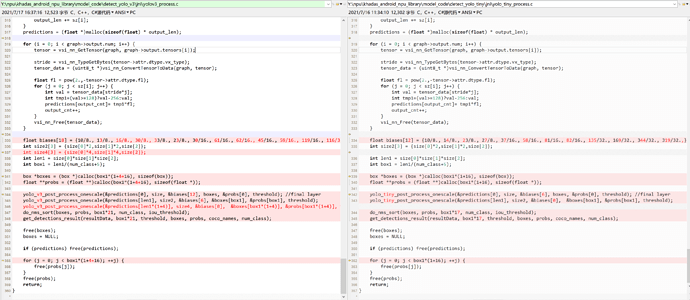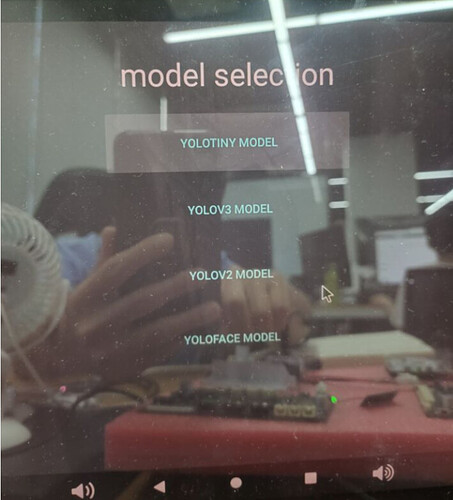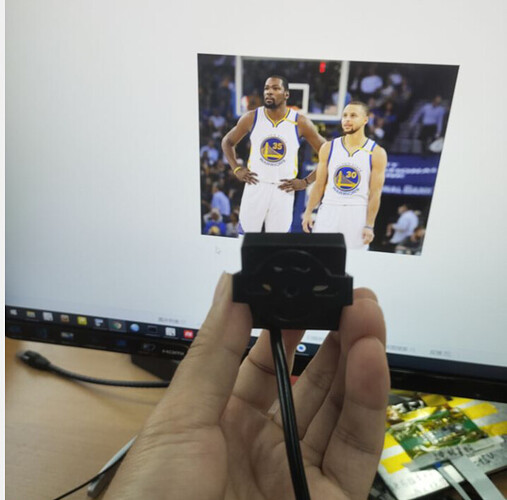Preface:
By going through the Beginners Guide: darknet-yolov3 or yolov3-tiny Model Training document, we now have our own trained Yolov3 or Yolov3-tiny model. Next, we will demonstrate step by step how to transform and adapt our model to the “Khadas Android NPU App” that will run on a Khadas VIM3 with Android OS installed.
Please refer to this document if you wish to run your model on a VIM3 with Ubuntu OS installed.
1. Transform Your Model
Model transformation flow chart:
1.1 Import Model
The current model transformation process is carried out in the “acuity-toolkit” directory:
cd {workspace}/aml_npu_sdk/acuity-toolkit
cp {workspace}/yolov3-khadas_ai.cfg_train demo/model/
cp {workspace}/yolov3-khadas_ai_last.weights demo/model/
cp {workspace}/test.jpg demo/model/
Modified as follows:
hlm@Server:/users/hlm/npu/aml_npu_sdk/acuity-toolkit/demo$ git diff
diff --git a/acuity-toolkit/demo/0_import_model.sh b/acuity-toolkit/demo/0_import_model.sh
index 3198810..4671c9f 100755
--- a/acuity-toolkit/demo/0_import_model.sh
+++ b/acuity-toolkit/demo/0_import_model.sh
@@ -1,6 +1,6 @@
#!/bin/bash
-NAME=mobilenet_tf
+NAME=yolov3
ACUITY_PATH=../bin/
convert_caffe=${ACUITY_PATH}convertcaffe
@@ -11,13 +11,13 @@ convert_onnx=${ACUITY_PATH}convertonnx
convert_keras=${ACUITY_PATH}convertkeras
convert_pytorch=${ACUITY_PATH}convertpytorch
-$convert_tf \
- --tf-pb ./model/mobilenet_v1.pb \
- --inputs input \
- --input-size-list '224,224,3' \
- --outputs MobilenetV1/Predictions/Softmax \
- --net-output ${NAME}.json \
- --data-output ${NAME}.data
+#$convert_tf \
+# --tf-pb ./model/mobilenet_v1.pb \
+# --inputs input \
+# --input-size-list '224,224,3' \
+# --outputs MobilenetV1/Predictions/Softmax \
+# --net-output ${NAME}.json \
+# --data-output ${NAME}.data
#$convert_caffe \
# --caffe-model xx.prototxt \
@@ -30,11 +30,11 @@ $convert_tf \
# --net-output ${NAME}.json \
# --data-output ${NAME}.data
-#$convert_darknet \
-# --net-input xxx.cfg \
-# --weight-input xxx.weights \
-# --net-output ${NAME}.json \
-# --data-output ${NAME}.data
+$convert_darknet \
+ --net-input ./model/yolov3-khadas_ai.cfg_train \
+ --weight-input ./model/yolov3-khadas_ai_last.weights \
+ --net-output ${NAME}.json \
+ --data-output ${NAME}.data
--- a/acuity-toolkit/demo/data/validation_tf.txt
+++ b/acuity-toolkit/demo/data/validation_tf.txt
@@ -1 +1 @@
-./space_shuttle_224.jpg, 813
+./test.jpg
Execute the corresponding script:
bash 0_import_model.sh
1.2 Quantify the Model
hlm@Server:/users/hlm/npu/aml_npu_sdk/acuity-toolkit/demo$ git diff
diff --git a/acuity-toolkit/demo/1_quantize_model.sh b/acuity-toolkit/demo/1_quantize_model.sh
index 630ea7f..ee7bd00 100755
--- a/acuity-toolkit/demo/1_quantize_model.sh
+++ b/acuity-toolkit/demo/1_quantize_model.sh
@@ -1,6 +1,6 @@
#!/bin/bash
-NAME=mobilenet_tf
+NAME=yolov3
ACUITY_PATH=../bin/
tensorzone=${ACUITY_PATH}tensorzonex
@@ -11,12 +11,12 @@ $tensorzone \
--dtype float32 \
--source text \
--source-file data/validation_tf.txt \
- --channel-mean-value '128 128 128 128' \
- --reorder-channel '0 1 2' \
+ --channel-mean-value '0 0 0 256' \
+ --reorder-channel '2 1 0' \
--model-input ${NAME}.json \
--model-data ${NAME}.data \
--model-quantize ${NAME}.quantize \
- --quantized-dtype asymmetric_affine-u8 \
+ --quantized-dtype dynamic_fixed_point-i8 \
Note that the - -quantized-dtype here is different for Ubuntu OS. Execute the corresponding script:
bash 1_quantize_model.sh
1.3 Generate Case Code
hlm@Server:/users/hlm/npu/aml_npu_sdk/acuity-toolkit/demo$ git diff
diff --git a/acuity-toolkit/demo/2_export_case_code.sh b/acuity-toolkit/demo/2_export_case_code.sh
index 85b101b..867c5b9 100755
--- a/acuity-toolkit/demo/2_export_case_code.sh
+++ b/acuity-toolkit/demo/2_export_case_code.sh
@@ -1,6 +1,6 @@
#!/bin/bash
-NAME=mobilenet_tf
+NAME=yolov3
ACUITY_PATH=../bin/
export_ovxlib=${ACUITY_PATH}ovxgenerator
@@ -8,8 +8,8 @@ export_ovxlib=${ACUITY_PATH}ovxgenerator
$export_ovxlib \
--model-input ${NAME}.json \
--data-input ${NAME}.data \
- --reorder-channel '0 1 2' \
- --channel-mean-value '128 128 128 128' \
+ --reorder-channel '2 1 0' \
+ --channel-mean-value '0 0 0 256' \
Execute the corresponding script:
bash 2_export_case_code.sh
Of course, as long as there is no error whilst running the script, you can execute the script with just one line after the above modifications are completed:
bash 0_import_model.sh && bash 1_quantize_model.sh && bash 2_export_case_code.sh
Finally, an “nbg_unify_yolov3” directory will be generated:
2. Import the Demo Application to Your VIM3 Running Android OS
2.1 Install the NDK Compilation Environment
wget https://dl.google.com/android/repository/android-ndk-r17-linux-x86_64.zip
unzip android-ndk-r17-linux-x86_64.zip
vim ~/.bashrc
##Add the following two lines of code to the end of the file
##export NDKROOT=/path/to/android-ndk-r17
##export PATH=$NDKROOT:$PATH
As shown in the figure:
Then execute this command via your SSH terminal:
source ~/.bashrc
2.2 Compile the Related Libraries
- Download the
khadas_android_npu_library
git clone https://github.com/khadas/khadas_android_npu_library -b khadas_ai
- Move the files
vnn_pre_process.h,vnn_post_process.h,vnn_yolov3.h,andvnn_yolov3.cfrom the “nbg_unify_yolov3” directory to the following corresponding directories.
cp {workspace}/nbg_unify_yolov3/vnn_pre_process.h {workspace}/khadas_android_npu_library/model_code/detect_yolo_v3/jni/include/
cp {workspace}/nbg_unify_yolov3/vnn_post_process.h {workspace}/khadas_android_npu_library/model_code/detect_yolo_v3/jni/include/
cp {workspace}/nbg_unify_yolov3/vnn_yolov3.h {workspace}/khadas_android_npu_library/model_code/detect_yolo_v3/jni/include/
cp {workspace}/nbg_unify_yolov3/vnn_yolov3.c {workspace}/khadas_android_npu_library/model_code/detect_yolo_v3/jni/
- Modify
yolov3_process.c. Our demo contains two classes (KuLi,DuLanTe), modify the class array,num_classandLISTSIZE
static char *coco_names[] = {"KuLi","DuLanTe"};
LISTSIZE = (num_class + 5 ) = 2+5 = 7
- Compile
libnn_yolo_v3.so
cd {workspace}/khadas_android_npu_library/model_code/detect_yolo_v3
ndk-build
3. Import Relevant Libraries into the Demo App
- Download the Demo App
git clone https://github.com/khadas/khadas_android_npu_app -b khadas_ai
- Replace
libnn_yolo_v3.so
cp {workspace}/khadas_android_npu_library/model_code/detect_yolo_v3/libs/armeabi-v7a/libnn_yolo_v3.so {workspace}/khadas_android_npu_app/app/libs/armeabi-v7a/
- Replace the
yolov3.nbfile
cp {workspace}/acuity-toolkit/demo/nbg_unify_yolov3/yolov3.nb {workspace}/khadas_android_npu_app/app/src/main/assets/yolov3_88.nb
- When you’re done, import the ‘khadas_android_npu_app’ project code into Android Studio, compile and run it on your VIM3 single board computer.
Supplemental Information:Yolov3-tiny
1. Import Model
The current model transformation process is carried out within the “acuity-toolkit” directory:
cd {workspace}/aml_npu_sdk/acuity-toolkit
cp {workspace}/yolov3-khadas_ai_tiny.cfg_train demo/model/
cp {workspace}/yolov3-khadas_ai_tiny_last.weights demo/model/
cp {workspace}/test.jpg demo/model/
Modified as follows:
hlm@Server:/users/hlm/npu/aml_npu_sdk/acuity-toolkit/demo$ git diff
diff --git a/acuity-toolkit/demo/0_import_model.sh b/acuity-toolkit/demo/0_import_model.sh
index 3198810..3b4efd3 100755
--- a/acuity-toolkit/demo/0_import_model.sh
+++ b/acuity-toolkit/demo/0_import_model.sh
@@ -1,6 +1,6 @@
#!/bin/bash
-NAME=mobilenet_tf
+NAME=yolotiny
ACUITY_PATH=../bin/
convert_caffe=${ACUITY_PATH}convertcaffe
@@ -11,13 +11,13 @@ convert_onnx=${ACUITY_PATH}convertonnx
convert_keras=${ACUITY_PATH}convertkeras
convert_pytorch=${ACUITY_PATH}convertpytorch
-$convert_tf \
- --tf-pb ./model/mobilenet_v1.pb \
- --inputs input \
- --input-size-list '224,224,3' \
- --outputs MobilenetV1/Predictions/Softmax \
- --net-output ${NAME}.json \
- --data-output ${NAME}.data
+#$convert_tf \
+# --tf-pb ./model/mobilenet_v1.pb \
+# --inputs input \
+# --input-size-list '224,224,3' \
+# --outputs MobilenetV1/Predictions/Softmax \
+# --net-output ${NAME}.json \
+# --data-output ${NAME}.data
#$convert_caffe \
# --caffe-model xx.prototxt \
@@ -30,11 +30,11 @@ $convert_tf \
# --net-output ${NAME}.json \
# --data-output ${NAME}.data
-#$convert_darknet \
-# --net-input xxx.cfg \
-# --weight-input xxx.weights \
-# --net-output ${NAME}.json \
-# --data-output ${NAME}.data
+$convert_darknet \
+ --net-input ./model/yolov3-khadas_ai_tiny.cfg_train \
+ --weight-input ./model/yolov3-khadas_ai_tiny_last.weights \
+ --net-output ${NAME}.json \
+ --data-output ${NAME}.data
--- a/acuity-toolkit/demo/data/validation_tf.txt
+++ b/acuity-toolkit/demo/data/validation_tf.txt
@@ -1 +1 @@
-./space_shuttle_224.jpg, 813
+./test.jpg
2. Quantify Your Model
hlm@Server:/users/hlm/npu/aml_npu_sdk/acuity-toolkit/demo$ git diff
diff --git a/acuity-toolkit/demo/1_quantize_model.sh b/acuity-toolkit/demo/1_quantize_model.sh
index 630ea7f..ee7bd00 100755
--- a/acuity-toolkit/demo/1_quantize_model.sh
+++ b/acuity-toolkit/demo/1_quantize_model.sh
@@ -1,6 +1,6 @@
#!/bin/bash
-NAME=mobilenet_tf
+NAME=yolotiny
ACUITY_PATH=../bin/
tensorzone=${ACUITY_PATH}tensorzonex
@@ -11,12 +11,12 @@ $tensorzone \
--dtype float32 \
--source text \
--source-file data/validation_tf.txt \
- --channel-mean-value '128 128 128 128' \
- --reorder-channel '0 1 2' \
+ --channel-mean-value '0 0 0 256' \
+ --reorder-channel '2 1 0' \
--model-input ${NAME}.json \
--model-data ${NAME}.data \
--model-quantize ${NAME}.quantize \
- --quantized-dtype asymmetric_affine-u8 \
+ --quantized-dtype dynamic_fixed_point-i8 \
Note that the - -quantized-dtype here is different on Ubuntu OS.
3. Generate Case Code
hlm@Server:/users/hlm/npu/aml_npu_sdk/acuity-toolkit/demo$ git diff
diff --git a/acuity-toolkit/demo/2_export_case_code.sh b/acuity-toolkit/demo/2_export_case_code.sh
index 85b101b..867c5b9 100755
--- a/acuity-toolkit/demo/2_export_case_code.sh
+++ b/acuity-toolkit/demo/2_export_case_code.sh
@@ -1,6 +1,6 @@
#!/bin/bash
-NAME=mobilenet_tf
+NAME=yolotiny
ACUITY_PATH=../bin/
export_ovxlib=${ACUITY_PATH}ovxgenerator
@@ -8,8 +8,8 @@ export_ovxlib=${ACUITY_PATH}ovxgenerator
$export_ovxlib \
--model-input ${NAME}.json \
--data-input ${NAME}.data \
- --reorder-channel '0 1 2' \
- --channel-mean-value '128 128 128 128' \
+ --reorder-channel '2 1 0' \
+ --channel-mean-value '0 0 0 256' \
After the above modification, you can execute the script with just one line:
bash 0_import_model.sh && bash 1_quantize_model.sh && bash 2_export_case_code.sh
Finally, a “nbg_unify_yolotiny” directory will be generated:
2. Import Demo Application into your VIM3 Android OS
2.1 Install the NDK Compilation Environment
wget https://dl.google.com/android/repository/android-ndk-r17-linux-x86_64.zip
unzip android-ndk-r17-linux-x86_64.zip
vim ~/.bashrc
##Add the following two lines of code to the end of the file
##export NDKROOT=/path/to/android-ndk-r17
##export PATH=$NDKROOT:$PATH
As shown in the figure:
Then execute this command from within your SSH terminal:
source ~/.bashrc
2.2 Compile Related Libraries
- Download the
khadas_android_npu_library
git clone https://github.com/khadas/khadas_android_npu_library -b khadas_ai
- Add the “khadas_android_npu_library/model_code/detect_yolo_tiny/” directory and related codes
The specific differences can be compared with Yolov3. The main differences are in the *_process.c file, as shown in the following figure:
- Move the files
vnn_pre_process.h,vnn_post_process.h,vnn_yolotiny.h,andvnn_yolotiny.cfrom the “detect_yolo_tiny” directory to the following corresponding directories:
cp {workspace}/nbg_unify_yolotiny/vnn_pre_process.h {workspace}/khadas_android_npu_library/model_code/detect_yolo_tiny/jni/include/
cp {workspace}/nbg_unify_yolotiny/vnn_post_process.h {workspace}/khadas_android_npu_library/model_code/detect_yolo_tiny/jni/include/
cp {workspace}/nbg_unify_yolotiny/vnn_yolotiny.h {workspace}/khadas_android_npu_library/model_code/detect_yolo_tiny/jni/include/
cp {workspace}/nbg_unify_yolotiny/vnn_yolotiny.c {workspace}/khadas_android_npu_library/model_code/detect_yolo_tiny/jni/
- Modify
yolo_tiny_process.c
Our demo contains two classes (KuLi,DuLanTe), modify the class array,num_classandLISTSIZE:
static char *coco_names[] = {"KuLi","DuLanTe"};
LISTSIZE = (num_class + 5 ) = 2+5 = 7
- Compile
libnn_yolo_tiny.so
cd {workspace}/khadas_android_npu_library/model_code/detect_yolo_tiny
ndk-build
- Compile
libkhadas_npu_jni.so
First add the following code:
hlm@Server:/users/hlm/npu/khadas_android_npu_library/detect_code$ git diff
diff --git a/detect_code/jni/khadas_npu_det.cpp b/detect_code/jni/khadas_npu_det.cpp
index 7db2632..f90862e
--- a/detect_code/jni/khadas_npu_det.cpp
+++ b/detect_code/jni/khadas_npu_det.cpp
@@ -159,6 +159,9 @@ static jint npu_det_set_model(JNIEnv *env, jclass clazz __unused,jint modelType)
case 2:
type = DET_YOLO_V3;
break;
+ case 3:
+ type = DET_YOLO_TINY;
+ break;
default:
type = DET_FACENET;
break;
@@ -201,6 +204,9 @@ static jint npu_det_get_result(JNIEnv *env, jclass clazz __unused,jobject detres
case 2:
type = DET_YOLO_V3;
break;
+ case 3:
+ type = DET_YOLO_TINY;
+ break;
default:
type = DET_FACENET;
break;
@@ -311,6 +317,9 @@ static jint npu_det_set_input(JNIEnv *env, jclass clazz __unused,jbyteArray imgb
case 2:
type = DET_YOLO_V3;
break;
+ case 3:
+ type = DET_YOLO_TINY;
+ break;
Compile:
hlm@Server:/users/hlm/npu/khadas_android_npu_library/detect_code$ ndk-build
2.3 Import Relevant Libraries to the Demo App
- Download the Demo App
git clone https://github.com/khadas/khadas_android_npu_app -b khadas_ai
- Replace
libnn_yolo_tiny.so
cp {workspace}/khadas_android_npu_library/model_code/detect_yolo_tiny/libs/armeabi-v7a/libnn_yolo_tiny.so {workspace}/khadas_android_npu_app/app/libs/armeabi-v7a/
- Replace
libkhadas_npu_jni.so
cp {workspace}/khadas_android_npu_library/detect_code/libs/armeabi-v7a/libkhadas_npu_jni.so {workspace}/khadas_android_npu_app/app/libs/armeabi-v7a/
- Replace the
yolotiny.nbfile
cp {workspace}/acuity-toolkit/demo/nbg_unify_yolotiny/yolotiny.nb {workspace}/khadas_android_npu_app/app/src/main/assets/yolotiny_88.nb
- Add Yolov3-tiny buttons to your app
The code is modified as follows:
hlm@Server:/users/hlm/npu/khadas_android_npu_app$ git diff app/src/
diff --git a/app/src/main/java/com/khadas/npudemo/CameraActivity.java b/app/src/main/java/com/khadas/npudemo/CameraActivity.java
index 20f3e8d..dc91f60
--- a/app/src/main/java/com/khadas/npudemo/CameraActivity.java
+++ b/app/src/main/java/com/khadas/npudemo/CameraActivity.java
@@ -111,7 +111,8 @@ public abstract class CameraActivity extends AppCompatActivity implements Camera
public enum ModeType {
DET_YOLOFACE_V2,
DET_YOLO_V2,
- DET_YOLO_V3
+ DET_YOLO_V3,
+ DET_YOLO_TINY
}
static ModeType mode_type;
@@ -162,6 +163,12 @@ public abstract class CameraActivity extends AppCompatActivity implements Camera
} else {
in = assmgr.open("yolov3_99.nb");
}
+ } if(mode_type == ModeType.DET_YOLO_TINY) {
+ if(mStrboard.equals("kvim3")) {
+ in = assmgr.open("yolotiny_88.nb");
+ } else {
+ in = assmgr.open("yolotiny_99.nb");
+ }
} if(mode_type == ModeType.DET_YOLOFACE_V2) {
if(mStrboard.equals("kvim3")) {
in = assmgr.open("yolo_face_88.nb");
@@ -278,7 +285,14 @@ public abstract class CameraActivity extends AppCompatActivity implements Camera
}
setmoderesult = inceptionv3.npu_det_set_model(mode_type.ordinal());
}
-
+ if(mode_type == ModeType.DET_YOLO_TINY) {
+ if(mStrboard.equals("kvim3")) {
+ copyNbFile(this, "yolotiny_88.nb");
+ } else {
+ copyNbFile(this, "yolotiny_99.nb");
+ }
+ setmoderesult = inceptionv3.npu_det_set_model(mode_type.ordinal());
+ }
if(mode_type == ModeType.DET_YOLOFACE_V2) {
if(mStrboard.equals("kvim3")) {
copyNbFile(this, "yolo_face_88.nb");
diff --git a/app/src/main/java/com/khadas/npudemo/MainActivity.java b/app/src/main/java/com/khadas/npudemo/MainActivity.java
index e858c2a..e85d6a9
--- a/app/src/main/java/com/khadas/npudemo/MainActivity.java
+++ b/app/src/main/java/com/khadas/npudemo/MainActivity.java
@@ -13,11 +13,13 @@ import android.app.AlertDialog;
import android.content.DialogInterface;
public class MainActivity extends AppCompatActivity implements View.OnClickListener{
+ private Button button_yolotiny;
private Button button_yolov3;
private Button button_yolov2;
private Button button_yoloface;
public static final String Intent_key="modetype";
private static final String TAG = "MainActivity";
+ AlertDialog.Builder alertDialog0;
AlertDialog.Builder alertDialog;
AlertDialog.Builder alertDialog2;
AlertDialog.Builder alertDialog3;
@@ -25,7 +27,8 @@ public class MainActivity extends AppCompatActivity implements View.OnClickListe
public enum ModeType {
DET_YOLOFACE_V2,
DET_YOLO_V2,
- DET_YOLO_V3
+ DET_YOLO_V3,
+ DET_YOLO_TINY
}
@@ -38,15 +41,35 @@ public class MainActivity extends AppCompatActivity implements View.OnClickListe
TextView textView = (TextView)findViewById(R.id.title);
textView.setText("model selection");
-
+ button_yolotiny = (Button) findViewById(R.id.button_yolotiny);
button_yolov3 = (Button) findViewById(R.id.button_yolov3);
button_yolov2 = (Button) findViewById(R.id.button_yolov2);
button_yoloface = (Button) findViewById(R.id.button_yoloface);
+ button_yolotiny.setOnClickListener(this);
button_yolov3.setOnClickListener(this);
button_yolov2.setOnClickListener(this);
button_yoloface.setOnClickListener(this);
+ alertDialog0 = new AlertDialog.Builder(MainActivity.this);
+ alertDialog0.setTitle("prompt");
+ alertDialog0.setMessage("yolotiny image recognition model will run");
+ alertDialog0.setNegativeButton("cancel", new DialogInterface.OnClickListener() {//<E6><B7><BB><E5><8A><A0><E5><8F><96><E6><B6><88>
+ @Override
+ public void onClick(DialogInterface dialogInterface, int i) {
+ Log.e(TAG, "AlertDialog cancel");
+ //onClickNo();
+ }
+ })
+ .setPositiveButton("ok", new DialogInterface.OnClickListener() {//<E6><B7><BB><E5><8A><A0>"Yes"<E6><8C><89><E9><92><AE>
+ @Override
+ public void onClick(DialogInterface dialogInterface, int i) {
+ Log.e(TAG, "AlertDialog ok");
+ onClickYolovTiny();
+ }
+ })
+ .create();
+
alertDialog = new AlertDialog.Builder(MainActivity.this);
alertDialog.setTitle("prompt");
alertDialog.setMessage("yolov3 image recognition model will run");
@@ -112,6 +135,13 @@ public class MainActivity extends AppCompatActivity implements View.OnClickListe
public void onClick(View v) {
//Log.e(TAG,"OnClickListener");
switch (v.getId()) {
+ case R.id.button_yolotiny:
+ Log.e(TAG, "button_yolotiny");
+ //onClickButton1(v);
+ alertDialog.setCancelable(false);//<E7><82><B9><E5><87><BB><E7><A9><BA><E7><99><BD><E5><A4><84><E4><B9><8B><E5><90><8E><E5><BC><B9><E5><87><BA><E6><A1><86><E4><B8><8D><E4><BC><9A>
<E6><B6><88><E5><A4><B1>
+ alertDialog.show();
+ buttonSetFocus(v);
+ break;
case R.id.button_yolov3:
Log.e(TAG, "button_yolov3");
//onClickButton1(v);
@@ -146,7 +176,14 @@ public class MainActivity extends AppCompatActivity implements View.OnClickListe
button.requestFocusFromTouch();
}
-
+
+ private void onClickYolovTiny() {
+ //<E5><A4><84><E7><90><86><E9><80><BB><E8><BE><91>
+ Log.e(TAG, "button_yolovtiny enter ");
+ Intent intent = new Intent(this,ClassifierActivity.class);
+ intent.putExtra(Intent_key,ModeType.DET_YOLO_TINY.ordinal());
+ startActivity(intent);
+ }
private void onClickYolov3() {
//<E5><A4><84><E7><90><86><E9><80><BB><E8><BE><91>
diff --git a/app/src/main/res/layout/activity_main.xml b/app/src/main/res/layout/activity_main.xml
index 41ba40c..e2216d2
--- a/app/src/main/res/layout/activity_main.xml
+++ b/app/src/main/res/layout/activity_main.xml
@@ -23,6 +23,12 @@
android:text="model select"/>
<Button
+ android:id="@+id/button_yolotiny"
+ android:layout_width="300dp"
+ android:layout_height="80dp"
+ style="?android:attr/buttonBarButtonStyle"
+ android:text="yolotiny model" />
+ <Button
android:id="@+id/button_yolov3"
android:layout_width="300dp"
android:layout_height="80dp"
- When you’re done, import the ‘khadas_android_npu_app’ project code into Android Studio, compile and run it on your VIM3 single board computer.




